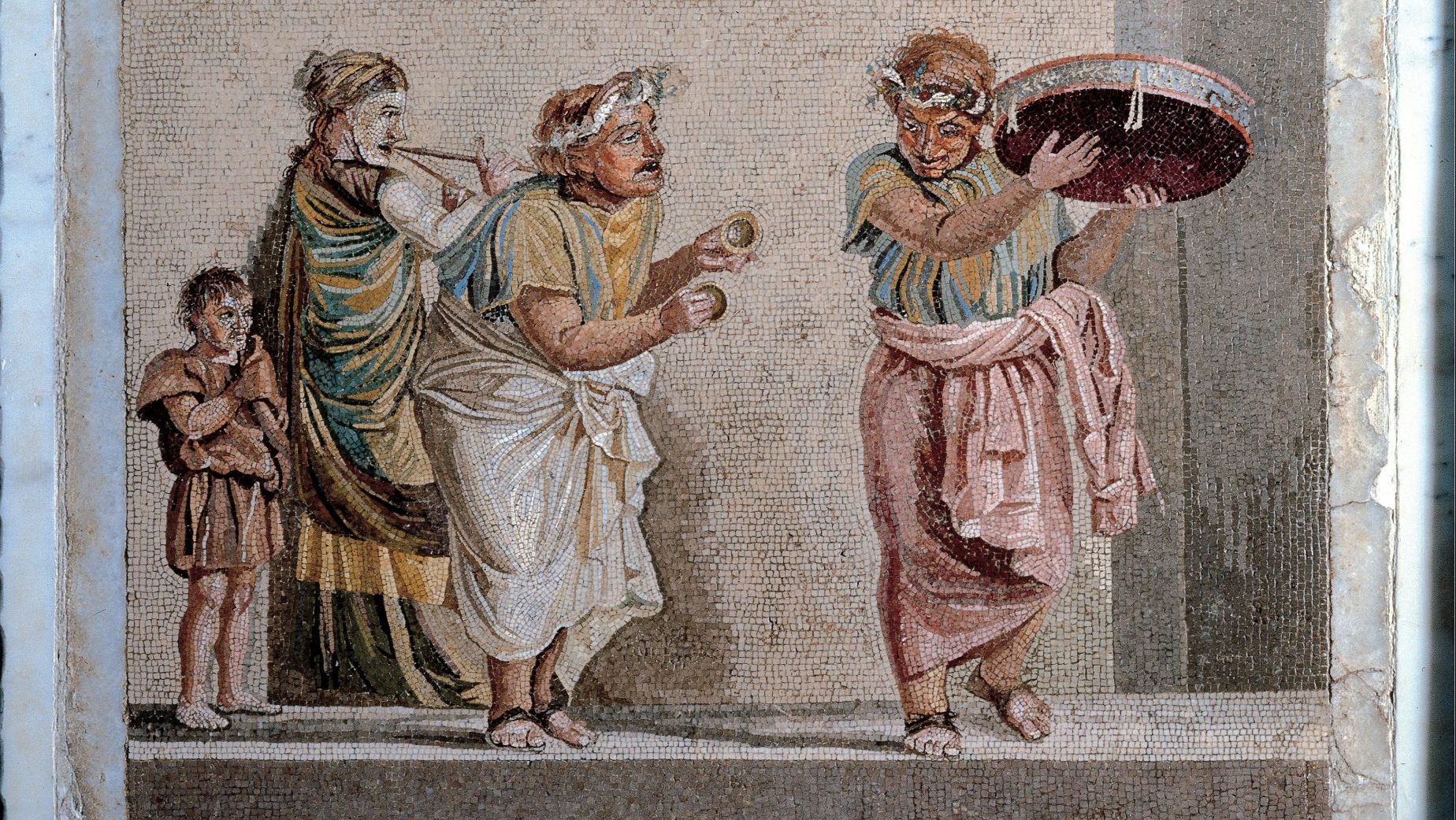How can the sounds of the ancient past be recreated? One of the most intangible aspects of a civilisation, music, may leave some physical traces, but coming from an age before recording, its feeling and fine definition inevitably dies with those who perform it.
But now a composer turned PhD student has set about the task of reconstructing the sound of Ancient Rome, a civilisation which still casts a heavy spell over us. And it is not the sound of high society – the palaces and fine villas – or the highprofile settings of the great arenas or circuses, but of the gritty reality of Roman street life.
Mary Ann Tedstone Glover has brought together practical music industry know-how, earned through her work composing for TV hits such as The Apprentice and The Great British Bake Off, and academic rigour, carrying out her research at Bath Spa University’s School of Music and Performing Arts and consulting with scholars at the University of Oxford’s Faculty of Classics, before bringing in a Grammy-winning producer to pull the whole thing together.
Released in digital form early last month and in physical form this week, The Music of Ancient Rome quickly entered the iTunes USA World Music Album Chart, prompting Tedstone Glover to muse whether it was “the first album of ancient Roman music to chart in close to 2000 years.”
In fact, musicians and scholars from diverse disciplines have long tried to piece together the sounds of Ancient Rome: a time and place when music permeated every aspect of life – whether sacred or secular, at peace or at war, at work or at leisure – and where musicianship was a prized skill.
Archaeologists have discovered ancient instruments and representations of music-making surviving in art, but the challenges of rediscovering Roman music are considerable.
Few whole instruments survive, and the notation used is still not fully understood.
Despite this, groups such as the Italian collective Synaulia, led by the expertise of paleo-organologist Walter Maioli, the Italian music and dance troupe Ludi Scaenici, and Ensemble Kérylos, led by French archaeologist and musician Annie Bélis, have been producing deeply atmospheric impressions of Roman music since the 1990s.
Now, Tedstone Glover has added her own interpretation, using both written and visual sources, from the writings of Plato to the 2nd-century floor mosaic depicting street musicians from the Naples National Archaeological Museum used on the album’s cover.
Focusing on the instruments that the lower classes would have heard and played rather than those such as the tibia wind instruments made of ivory, silver and bronze found at Pompeii, for example, she brought together musicians playing reconstructions of the reeded, double piped aulos, the long-necked, small-bodied lute known as the pandoura, the more familiar lyre, and a bell-like rattle cup, which Tedstone Glover had recreated based on an ancient original held in Los Angeles’ Getty Museum.
Central to the sound of the album are the voices of the British female five-piece a cappella ensemble Papagena, whose previous repertoire has encompassed everything from the songs of Hildegard of Bingen to Guns N’ Roses, and who were given a training in Latin pronunciation by Jesus College classics professors.
Producer Trevor Gibson, of Birmingham’s Circle Studios, brings a background working with Manowar, Bastille and The Enemy to the project. Despite being the man responsible for Iron Maiden’s Bruce Dickinson playing war-torn Yugoslavia in 1994, an event documented in the film Scream For Me Sarajevo, he told The Times that The Music of Ancient Rome is “the wildest thing I’ve ever been involved with” (that Grammy was for the rather less-wild audiobook version of Malala Yousafzai’s autobiography). The result of bringing these diverse contributors together is something perhaps more familiar than the experiments that came before.
Opener Copa Surisca, based on an ancient poem about a female tavernkeeper, has the groove of the Tuareg desert blues of the Sahara and an ominous vocal line reminiscent of Carl Orff ’s Carmina Burana. Tandem Venit Amor (At Last, Love Arrives), uses a poem by 1st-century BC female poet Sulpicia and has the plucked strings and languorous, gothic feel of early Delta blues.
The orgiastic instrumental Bacchus feels very Celtic with its frenetic strings, Saturnian is almost a country music stomper, while the strings on the lullaby Lala bring to mind Chinese musical traditions. And it’s in this track, based on two sparse lines (“Lullaby, Lullaby, Lullaby, either go to sleep or suckle”), that the true universality of this collection of music, which aims for authenticity about a particular historical time and place, becomes clear. Derived from possibly the earliest lullaby to survive in written form, it articulates the timeless human experiences of revelry, parenthood and love.
Ancient Roman music in five songs
Synaulia, Etruria (1996)
This upbeat track by the Italian ancient music project was used as incidental music in Ridley Scott’s Gladiator (2000).
Ensemble Kérylos, Delphian Hymns to Apollo (1996)
The French ensemble’s most recent album brings together songs from manuscript sources from the Greeks to the early Christians. This earlier track used the 2nd-century BC hymns inscribed on the walls of the Greek city of Delphi.
Ludi Scaenici, Castor et Pollux (2017)
A fanfare to the twins of Greek and Roman mythology, this song is by the Italian group that brings together music and dramatic performance and that was a member of the partly EU-funded European Music Archaeology Project.
Mary Ann Tedstone Glover, Aura Levis (2021)
This acapella song makes affecting use of the haunting voices of British ensemble Papagena. The text is taken from a poem on a wall in Pompeii, prophetically stating “Nihil durare potest tempore perpetuo” (Nothing can last for ever).
Mary Ann Tedstone Glover, Plinius (2021)
The closing track of The Music of Ancient Rome album sets one of Pliny the Younger’s love letters to his third wife, Calpurnia, to a dramatic yet courtly backing.
Now listen to the playlist:




